Suzanne Belperron’s Arrestingly Modern Style Lives On
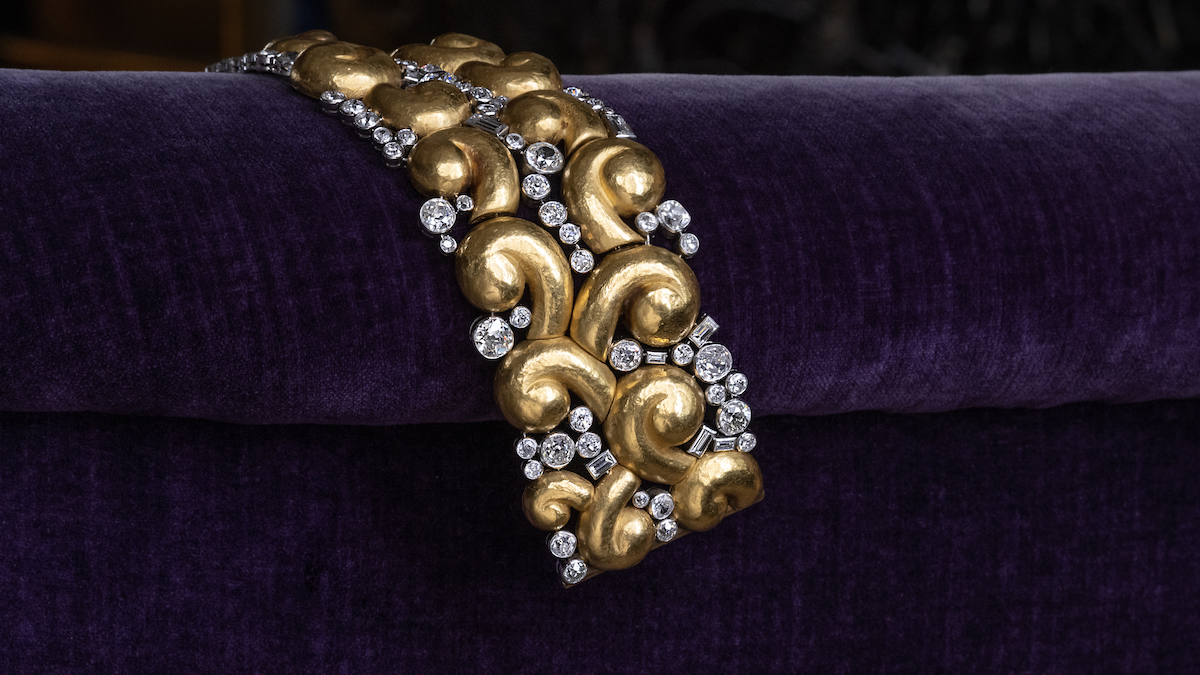
The word visionary may be overused to describe creatives today, but it couldn’t hold truer when it comes to French jeweler Suzanne Belperron. A century ago, when the disciplined Art Deco style was all the rage, she pioneered a new jewelry aesthetic, forging curvaceous, sculptural designs that liberated stones from their prim and proper settings and mingled precious diamonds and emeralds with more quotidian materials. Belperron always favored style over the status of gems.
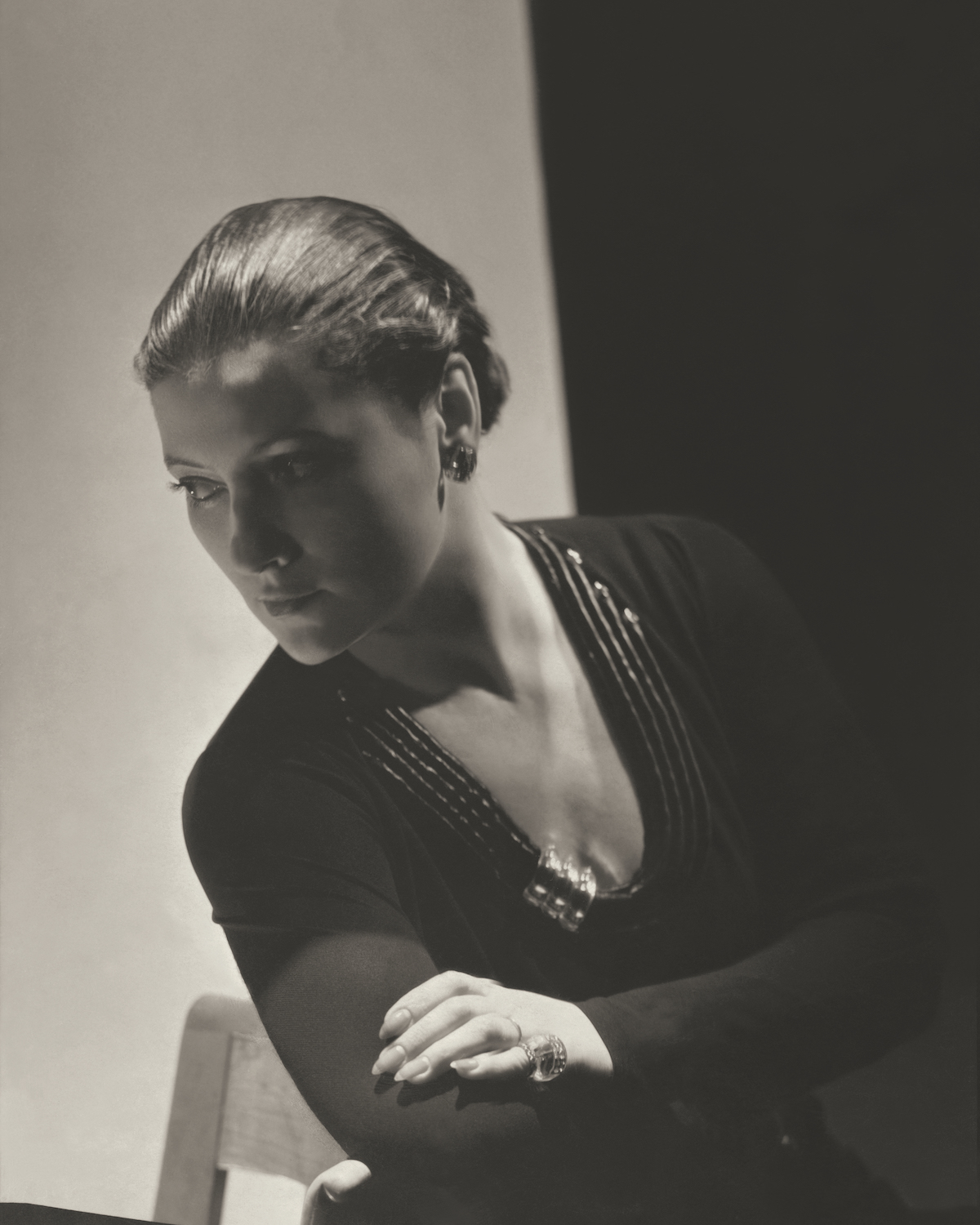
The designer’s own engagement ring illustrates her early rule-breaking style. After Jean Belperron proposed to her in 1923, she dreamed up the Ying et Yang ring, a bulbous swirl of hammered gold with a two carat cushion-cut diamond nestled on an angle. It was a radical departure from everyone elses’ classic diamond and platinum solitaire rings.
“She envisioned the future of jewelry design,” says Nico Landrigan, whose family acquired the worldwide rights to Belperron’s archive of over 9,200 designs. “She wasn’t just looking at the next season or year—she was designing for the next century,” he explained. In 2015 the Landrigans opened the Belperron Fifth Avenue salon, offering a curated selection of pieces recreated from the archives. “Some designs are 100 years old, and clients often say to me that they look shockingly modern.”
A pioneering designer who didn’t sign her pieces
Despite being one of the most innovative jewelers of the 20th century (devoted clients included the Duke and Duchess of Windsor, Elsa Schiaparelli and Karl Lagerfeld), Belperron’s name remains relatively unknown outside the circle of jewelry collectors. She didn’t sign her pieces, saying, “My style is my signature.” But that made it harder to identify her jewelry.
“Clients who bought Belperron’s jewelry often didn’t know who designed it, but they bought it because they loved it,” says Russell Zelenetz, an owner of Stephen Russell jewelry boutique, and one of the most important dealers in vintage Belperron. He says that Belperron’s arrestingly modern style has become adored by a new generation of collectors. “More people know Belperron’s name and are asking for her jewelry.”

In some ways, Belperron’s jewelry is timelier than ever. Stripped of the formality of classic jewels, her idiosyncratic pieces are bold, colorful and wearable. ‘Wearable’ may seem like a superfluous term (shouldn’t all jewelry be wearable?), but again, it holds true for Belperron. Her streamlined designs are devoid of fussiness, which makes them easy to sport—day or evening.
“She created new volumes with different visual rhythm and reason,” wrote Karl Lagerfeld in the forward to the book Jewelry by Suzanne Belperron, published by Thames & Hudson in 2015. “Her work never inflicted the wearer with an idea of wealth. There was never any danger of overstatement.”
A high profile fashion icon, Lagerfeld understood Belperron’s artistic vision and was a serious collector. He was often photographed with one of his many Belperron brooches—a rock crystal and diamond barrel design or platinum and diamond leaf pin—pinned to his tie or lapel.
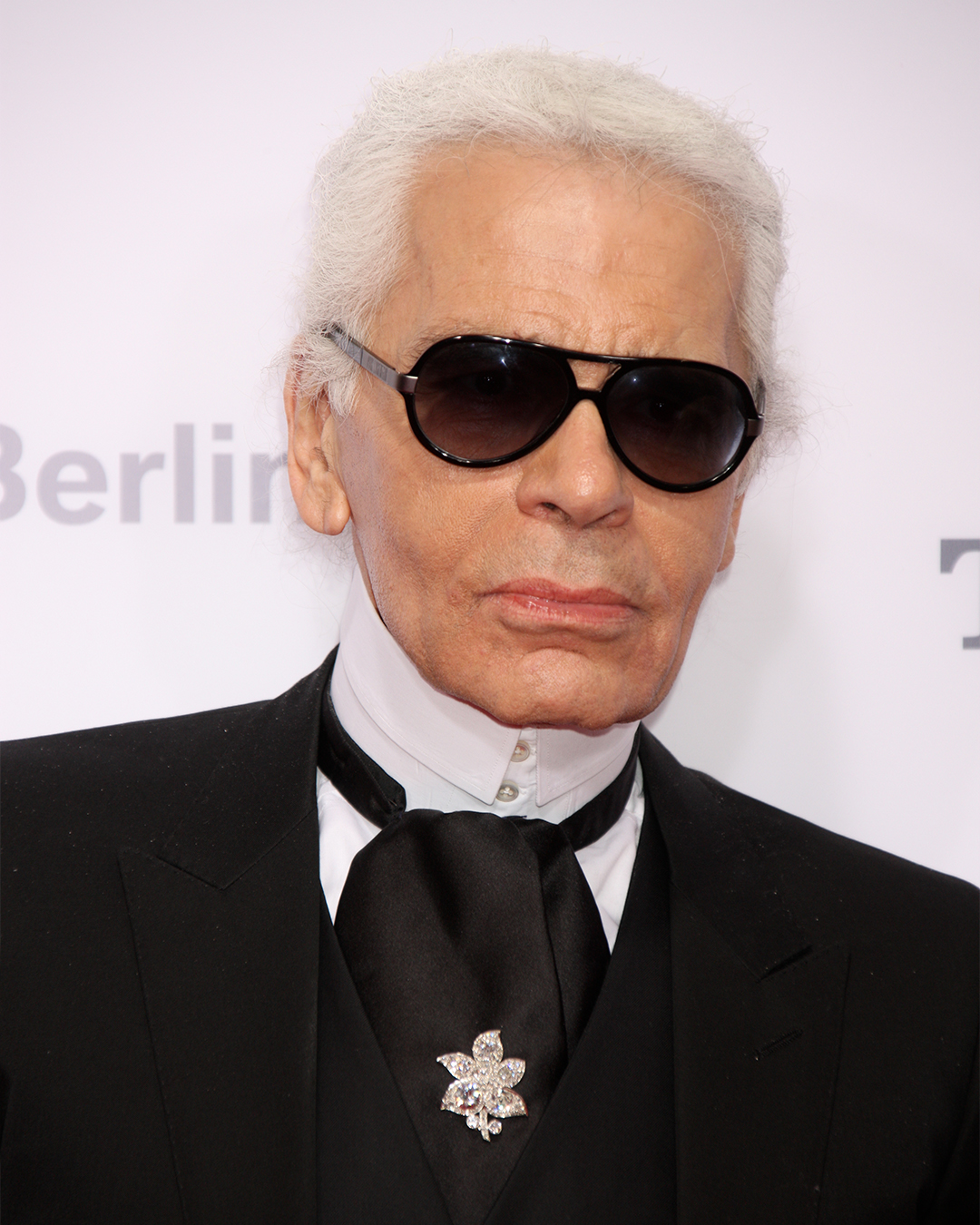
A master of technique and style
Belperron’s pioneering aesthetic was rooted in a mastery of technique. After training at the École des Beaux-Arts in Besançon, Belperron (née Vuillerme) moved to Paris at the age of 19 and was hired as a designer for Maison Boivin. During her 13 years at Boivin, she explored various references, from ancient Egyptian sculpture and abstract tribal motifs to architecture and even the Michelin Man, all of which were subtly referenced in her designs.
In 1932, she left Boivin and joined forces with the preeminent French stone dealer Bernard Herz. Working from a by-appointment Parisian studio, she played with proportions, light and gradations of color, and combined precious gems with smokey quartz, agate and citrine. She was known for large-scale creations that didn’t overpower but expressed lightness and movement.
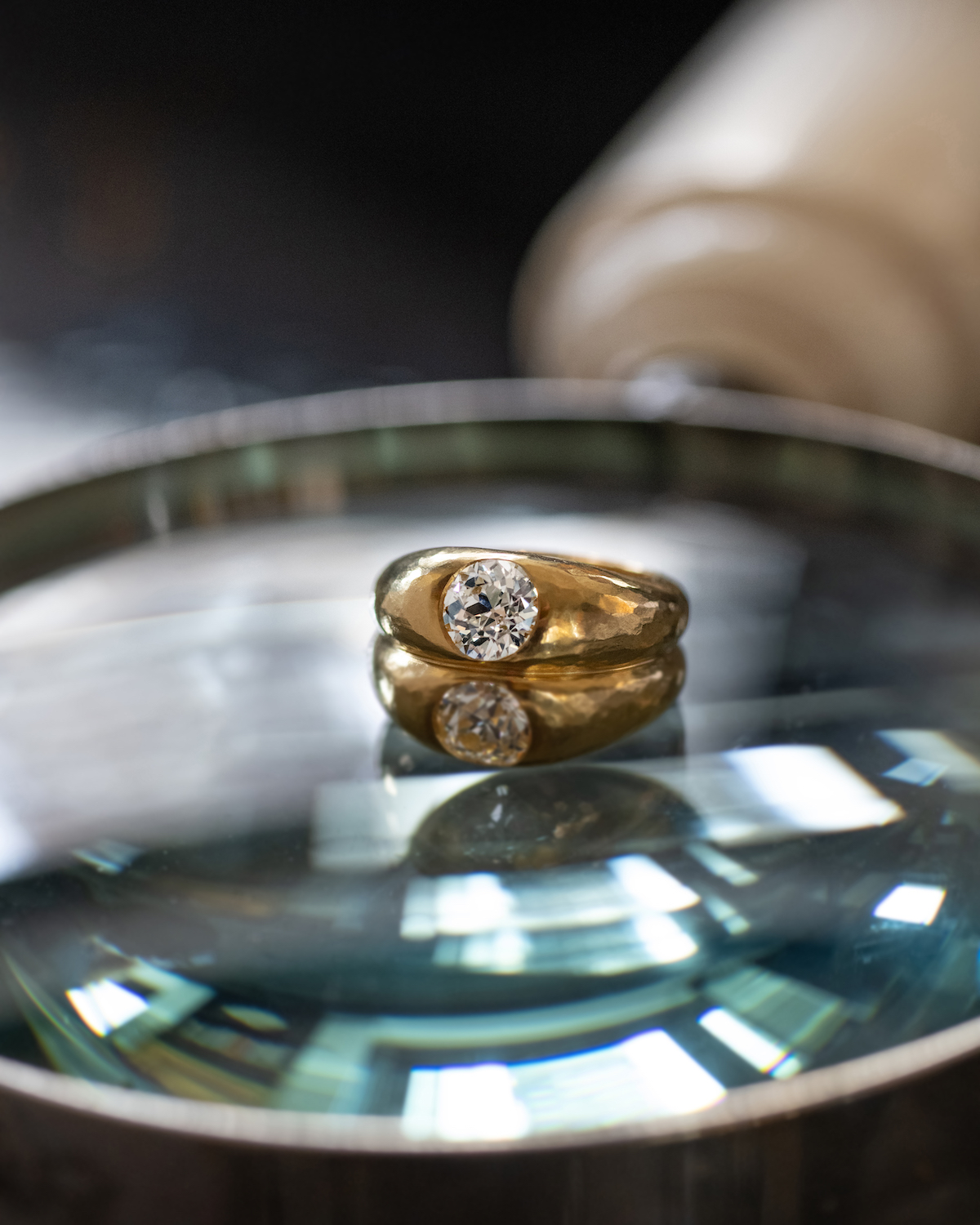
The ensuing war years showed her true courage. Belperron joined the French resistance (The Jeweler of Stolen Dreams by M.J. Rose recounts the story) and took ownership of her Jewish partner’s business to save the company from the Nazi regime. Sadly, Bernard Herz didn’t survive the war, but when his son Jean returned to Paris, she joined forces with him to start Herz-Belperron. During their 30-year partnership, they created lavish jewels and dressed some of the most stylish icons of the mid-twentieth century. They decided to retire and close the business in 1974 and Belperron passed away almost a decade later at the age of 82.
Landrigan says her early training and her mastery of “the ultra-disciplined Art Deco style” established her strong foundation. But once that style became overly popular, she moved on. “In classic iconoclastic style, I imagine she said to herself, ‘now it’s been done, I’m moving on.’” She applied those Art Deco principles to curvaceous forms, which Landrigan says she turned into something “feminine, tactile and appealing.”
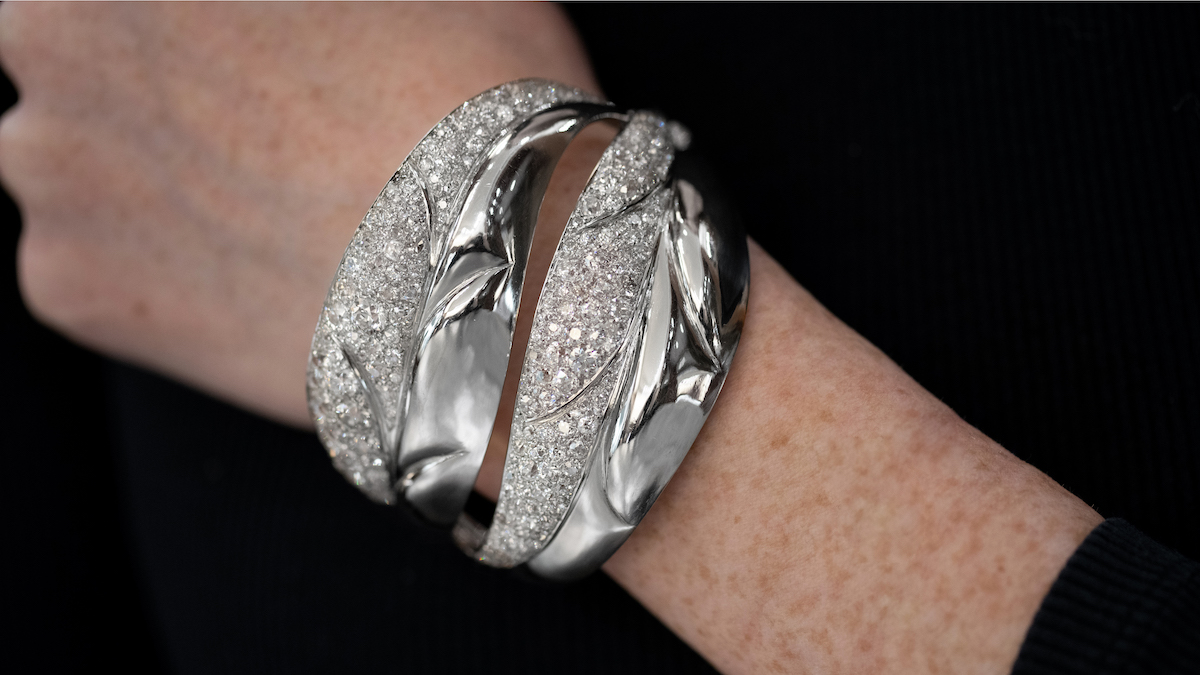
Belperron understood what was fashionable—and what made women look and feel beautiful. Take her carved chalcedony and diamond earrings, which swept up the ear like an instant facelift. “Everything she made had a sense of movement,” said Zelenetz. “Everything was aesthetically pleasing to the eye; she never did anything that just sat there.” Her jewelry was made exclusively by the French manufacturer Groene & Darde who, he says, was a genius in engineering. “Even a pair of earrings as large as my fist had balance and laid beautifully on the ears.”
Belperron’s unique sense of color is another signature, says Zelenetz. From layered neutral stones to a mélange of tonal gems, she had an eye for color. An example, he points out, is the oversized tourmaline and emerald cuff in his Madison Avenue salon, which is composed of a mosaic of varying green gems. “She took all these green stones and composed this beautiful, happy and elegant piece.”
“People are still astonished by the risks she was willing to take,” says jewelry historian Marion Fasel, founder of The Adventurine. That daring style, she says, is expressed in the designer’s “enormous scale and bulbous shapes, and the way she plunged these large diamonds into other materials.”
Inspiring the next generation of jewelers
Belperron’s elegant, modernist designs are in demand today. At auction, her unsigned pieces command top dollar, and both Zelenetz and Landrigan say interest is at an all-time high. Belperron’s record price at auction was achieved at Christie’s in 2018 when a buyer paid $852,500 for a diamond Tube bracelet (the pre-sale estimate was $200,000 to $300,000). Another carved amethyst, ruby and diamond leaf necklace sold for $507,000 in the same auction.
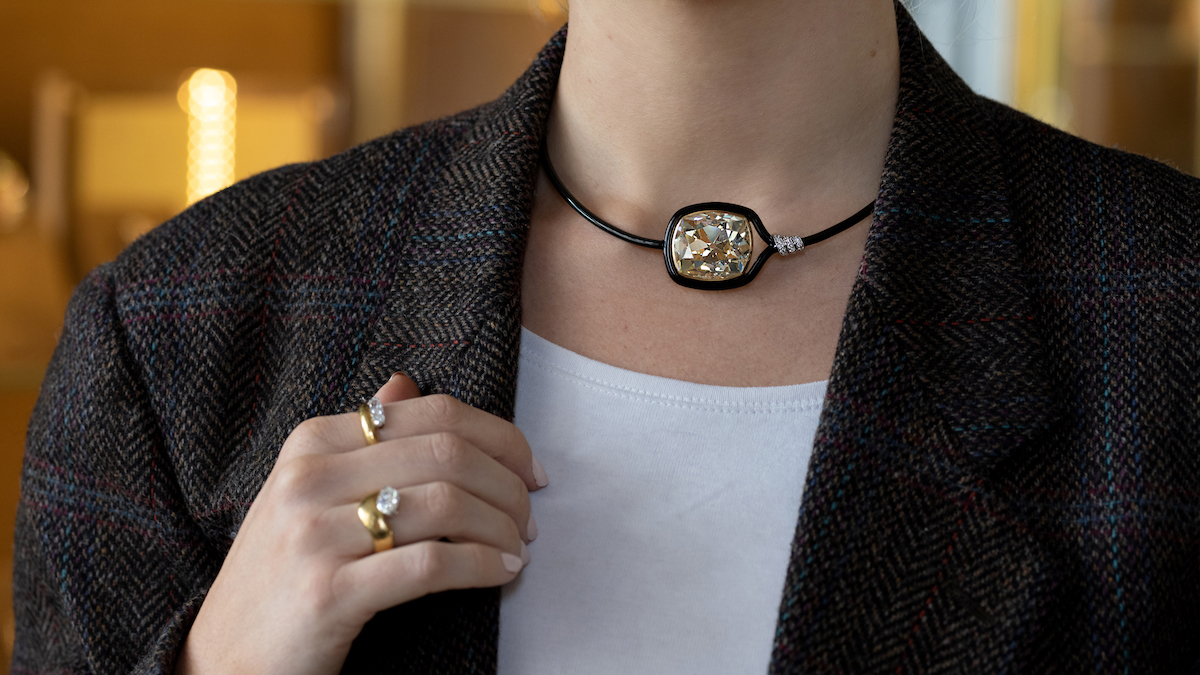
Her influence has resonated with some of today’s best and brightest designers, says Fasel. “There is a legacy of daring and being an iconoclast that we see in some great designers today, like the incredible work of Ana Khouri and Kristy Stone at Retrouvai.” Their form, use of mixed materials, and way of setting stones in stones recall some of Belperron’s hallmarks.
Brazilian jeweler Fernando Jorge, who is based in London, says Belperron’s legacy inspired him to be bolder and more adventurous. His Flame collection is a sort of homage to Belperron but reflects Jorge’s own idiosyncratic style. Unveiled three years ago, the Flame originated with large, carved swirling shapes in citrine, rose quartz and amethyst, and it’s become his bestselling collection, appearing in new iterations every year. “It has a little provocative effect and it’s intriguing, and that’s what people want,” he says. He’s drawn to her pieces for their simplicity and how they look on the body. “Her designs are adventurous and free-spirited, and they express a bold femininity that I love.”
She also had a sense of wit. One of her popular designs was inspired by the Michelin Man, who is known in France as Bibendum. She carved chalcedony rings and cuffs in stacked concentric circles that resembled the geometric contours of the cartoon character and set them with stones.
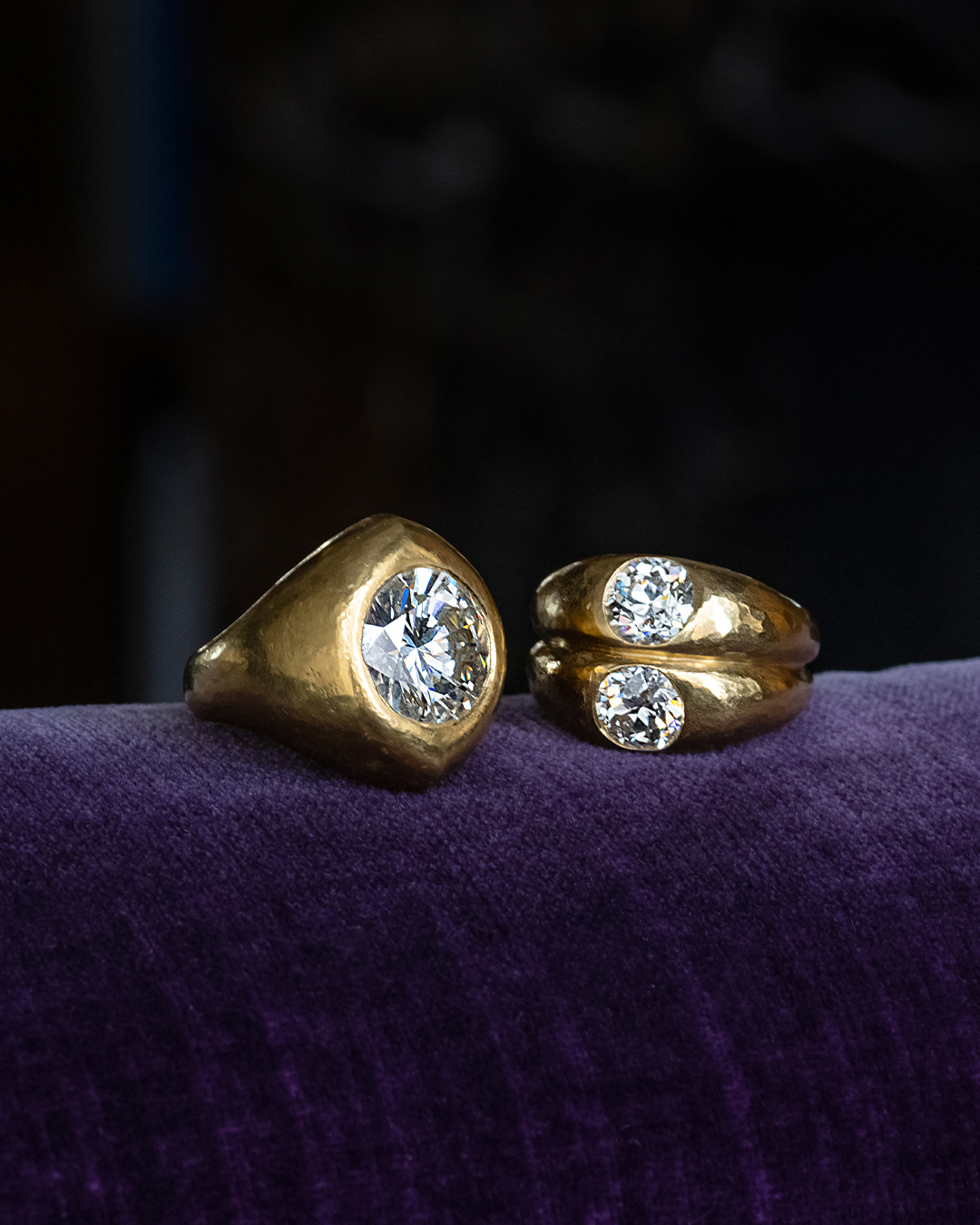
She also made large diamonds appear discreet and wearable for every day in designs like the Turban ring, which wrapped the stones in gold, and rounded quartz rings with big diamonds dropped in the middle.
Landrigan says that Belperron’s bestsellers today are the Couronne Cuffs made in 22 karat gold and set with cabochon stones, and the Wave motif necklaces and bracelets, which appear like undulating gold vines with diamonds placed on the twists and turns.
A visionary indeed: Belperron knew her designs didn’t require a signature; her style became so recognizable that we know a Belperron when we see it.
